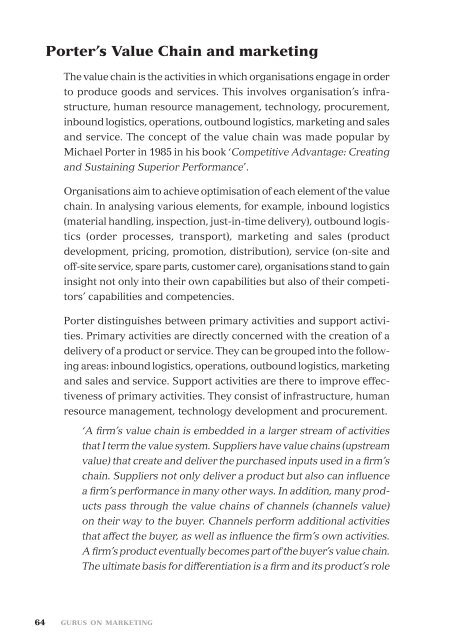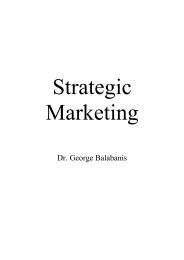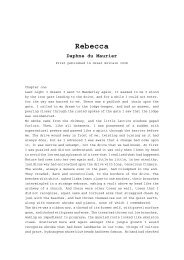Gurus On Marketing
Gurus On Marketing
Gurus On Marketing
You also want an ePaper? Increase the reach of your titles
YUMPU automatically turns print PDFs into web optimized ePapers that Google loves.
Porter’s Value Chain and marketing<br />
The value chain is the activities in which organisations engage in order<br />
to produce goods and services. This involves organisation’s infrastructure,<br />
human resource management, technology, procurement,<br />
inbound logistics, operations, outbound logistics, marketing and sales<br />
and service. The concept of the value chain was made popular by<br />
Michael Porter in 1985 in his book ‘Competitive Advantage: Creating<br />
and Sustaining Superior Performance’.<br />
Organisations aim to achieve optimisation of each element of the value<br />
chain. In analysing various elements, for example, inbound logistics<br />
(material handling, inspection, just-in-time delivery), outbound logistics<br />
(order processes, transport), marketing and sales (product<br />
development, pricing, promotion, distribution), service (on-site and<br />
off-site service, spare parts, customer care), organisations stand to gain<br />
insight not only into their own capabilities but also of their competitors’<br />
capabilities and competencies.<br />
Porter distinguishes between primary activities and support activities.<br />
Primary activities are directly concerned with the creation of a<br />
delivery of a product or service. They can be grouped into the following<br />
areas: inbound logistics, operations, outbound logistics, marketing<br />
and sales and service. Support activities are there to improve effectiveness<br />
of primary activities. They consist of infrastructure, human<br />
resource management, technology development and procurement.<br />
‘A firm’s value chain is embedded in a larger stream of activities<br />
that I term the value system. Suppliers have value chains (upstream<br />
value) that create and deliver the purchased inputs used in a firm’s<br />
chain. Suppliers not only deliver a product but also can influence<br />
a firm’s performance in many other ways. In addition, many products<br />
pass through the value chains of channels (channels value)<br />
on their way to the buyer. Channels perform additional activities<br />
that affect the buyer, as well as influence the firm’s own activities.<br />
A firm’s product eventually becomes part of the buyer’s value chain.<br />
The ultimate basis for differentiation is a firm and its product’s role<br />
64<br />
GURUS ON MARKETING










